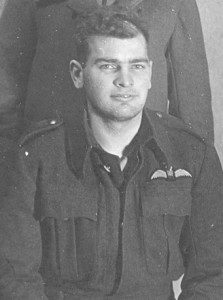
With two of the principal Great Escape diggers – Wally Floody and John Weir – out of the mix, and with a big push on to complete “Harry” by late March 1944, the bulk of the work fell to stalwart tunnellers, such as Hank Birkland.
At age 27, the Canadian carpenter’s son, former farmer, one-time salesman, itinerant miner and lacrosse player, had seen his share of hard labour and unexpected responsibility. During the Depression, when the family farm in Western Canada fell on tough times, Birkland worked to keep the enterprize afloat, while keeping his studies up at high school. But when the war broke out, he was quick to enlist – trained as a fighter pilot in 1940-41, on ops with 72 Squadron through the fall of 1941, and shot down Nov. 7.
By the time their German captors had installed them at Stalag Luft III, Floody had teamed up Birkland and Weir as co-tunnellers. Floody learned that when “Scruffy” Weir dug in “Harry” he tended to veer to the left and when “Big Train” Birkland dug, he veered to the right. So Floody made sure the two worked on back-to-back shifts to compensate.
According to Canadian historian Jonathan Vance (A Gallant Company), Birkland wrote family in the last days before the breakout: “I got a letter last month to which I will not be able to reply,” Birkland wrote. “I am not in a position to carry on a letter-for-letter correspondence for long.”